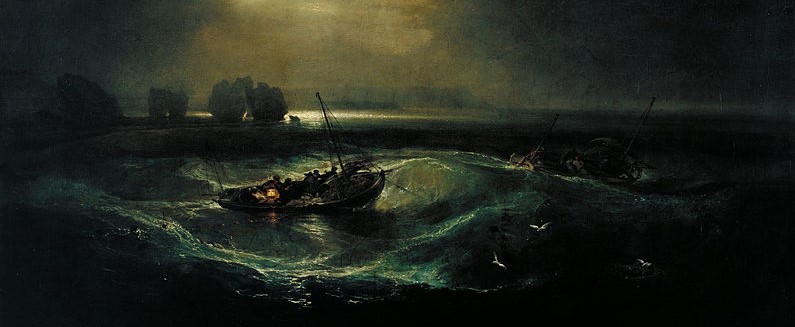Jean-Francois Millet, El sembrador, 1850, óleo sobre tela, 102 x 83 cm. Museum of Fine Arts, Boston
“Sowing is the penultimate act of faith in man’s battle to earn his daily bread, for potentially edible grain is flung to the winds, in the hope of harvests far beyond the control of the sower. In Catholic France, the sower often began his task by crossing himself, or by forming a cross with a handful of grain flung into the air in two strokes. After reaping, sowing is the most frequently reproduced agricultural activity and, among countless prototypes, the illustrations for October in the Très Riches Heures of the Duke de Berry, depicting a similar sower – capped, wearing leggings, and holding his seed bag in his left hand – is often suggested as a source for Millet. But as with so many of his images, The Sower is more likely to have evolved from the conflation of several well-studied visual memories.”
“When The Sower was exhibited, it attracted a considerable amount of attention, with at least nineteen critics commenting on it in their reviews. For the most part, reactions were favorable, although the critics differed widely in their understanding of the picture. De Chenevières, an important conservative critic, admired the ‘beauty, poetry and grace’ of the figure, while Clément de Ris praised the picture as ‘an energetic study full of movement.’ The thick, heavily worked surface disconcerted most of the critics, and the otherwise favorably impressed [Théophile] Gautier described the technique as ‘Millet’s trowel scrapings.’ But even more than technique and style, the critics felt compelled to address the image itself: almost to a man, they were struck by ‘the strangeness and power of the figure,’ although after acknowledging the inescapable presence of the sower, they remained uncertain what he represented. Fizelière saw a religious dignity in the figure who stood ‘Alone, in the middle fo bare and newly turned ground, as if he understood the grandeur of his mission,’ Sabatier-Ungher saw ‘the Modern Demos,’ (the Greek personification of the common man), where Desplaces felt Millet had ‘vilified the sower.’”
Alexandra R. Murphy, Jean-François Millet. Exhibition catalogue (Boston, MA: Museum of Fine Arts, 1984), pp. 31 & 32.


